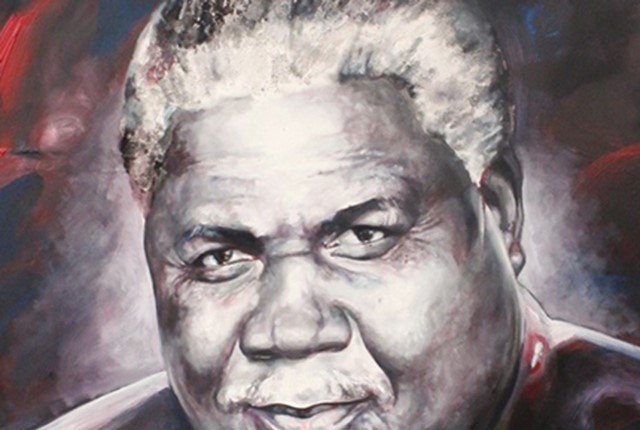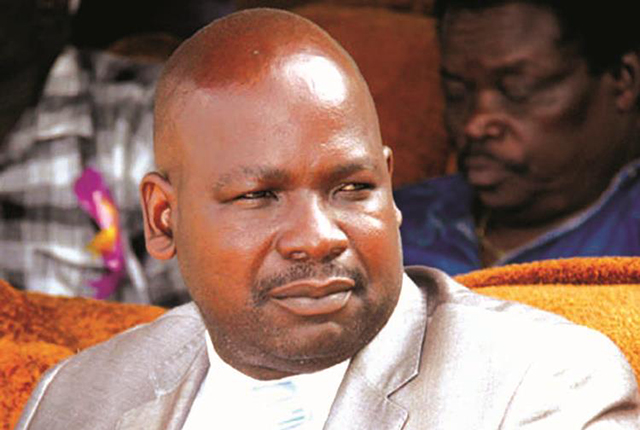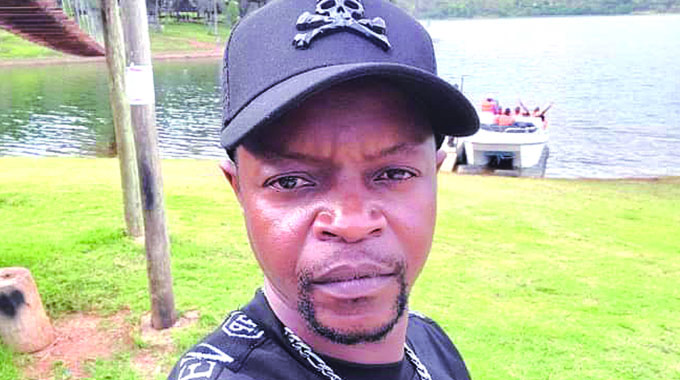Portraits can tell the country’s history


“Joshua Mqabuko Nkomo” by Thomas Mwasangwala
The constant perplexity of the lack of visual record in Zimbabwe can, at all times, serve as an albatross to the museums and archival sector, moreover, the nation as a whole. At the end of the 19th Century, one finds images of resident Zimbabweans as captives of the colonialists, records of these individuals have been preserved in archives with several phrases that offered the coloniser’s perspective; “The rogue Nehanda”, “the rebel Mkwati” or “the devious Mapondera”.These labels carried their biases, the stances in which the captives stood were staged; bent at the knee and head lowered so as to convey shame. In images, caricatures of Lobengula were popularised, erasing his feats in fighting the British; yet these foreign imposed images are the only ones that remain to offer an insight into the past. Stage directed mug shots and caricatures.
Early Rhodesia seems to have been a dark age; a predominantly European image of the country is projected incessantly; a imperialist dream worthy to appear in Burroughs’ or Kipling’s pulpy fictitious novels.
Yet something was brewing among the residents of the country; movements in the vein of the Chimurenga that had taken place only three decades before. Trade Unionism became the foundation of the political fight that was to follow within the decades to follow, therein lay the problem; the movement had leaders, however in the contemporary, they remain faceless.
Plaques in many areas of the country carry great names; Burombo and Mzingeli, trade unionists who went against the oppressive laws of the Rhodesian establishment.
From the Museum perspective, the progenitors of a movement that arguably contributed to eventual Independence of the majority, should have photographs somewhere within the borders of the nation. As with accordance, the annals of history are set to bestow greatness with dedications from the Cultural sector; be it in sculpture as the late Vice President Joshua Nkomo or a painting as the National Gallery of Zimbabwe has in its collection, from last year’s Prominent Personalities: Portraits of Zimbabweans exhibition, which took place last year.
Of note, the aforementioned heroes, Burombo and Mzingeli, did not have any source materials for the painters and sculptors to draw from, and in fact, so many public figures did not have source materials that veritably passed off as portrait worthy material.
Needless to say, the advent of the cellular phone provided a certain entarte kunst appeal where the aesthetic lay in the eye of the beholder and true photographer and painter are hardly considered in the portrait making process. One may cringe at the fact that one day, the only source material of the likeness of a high level politician may be a picture of them waving a gang sign or pulling “duck face”.
Back to Burombo and Mzingeli; these two icons present the crises portraiture meets in terms of the captioning of history, the living icons do not sit for a portrait, factually leaving the portrait artist in crisis.
Secondly, the abandonment of the portrait artist leads to the lack of physical records that present the likeness of the icon. Notably, the latter may become to one in the contemporary world; myths or fables, names without faces told around fires in order to attempt to establish some motivational aura to keep people going.
Chikonzero Chazunguza’s series of works which appeared at the 2015 Venice Biennale under the Pixels of Ubuntu mantle, entitled Presence of the Past, served just as much in expanding just how much the lack of identity may drive a nation into a philosophical or developmental loop.
Arguably, the same stances which a photographer within the British South Africa Police stage managed the leaders of the Chimurenga are now being stage managed by the contemporary person, only subconsciously within themselves. Being a self-portrait and handled by the individual via a trellis like contraption, the lens often looks down upon the individual and therein, the order of things is set.
A simple envisioning of Burombo, an elephant of a man, holding a “selfie-stick” pointing the lens down at himself would be a most preposterous thought one could make!
The grandeur of a portrait is an misconception that has been long drawn through the drivel that Art is a preserve of the wealthy, perpetuated in colonial times whence only blue collar labour was imposed on the residents of Zimbabwe. The portrait was everywhere, Rhodesians glorifying portraits painted by Rhodesian artists of individuals such as Cecil Rhodes, Leander Jameson and the Moffatts (John, Robert and Henry Unwin) and so on.
These works became clung to the nation’s collective conscious, only challenged by John Takawira’s abstract sculpture of a metaphysical figure; Chaminuka the Great.
The relevance of a portrait thus is not grounded as a record of moments; it however materialises as the best moment, the best lines and colour as the model may assume the best stance in the bid to claim their best moment. The halls of greatness and museums the world over, are bedecked by portraits of great men and women, heroes and in many cases, villains and intimate compositions of children and families which have stood the test of time.
As for the art world during the colonial dispensation, Fine Art remained limited to the white populace, it is interesting to find the black artists of the time such as Charles Fernando and Kingsley Sambo, painting self portraits with liveliness and expression that thwarted the colonial spite which crushed their interest to caption the life which existed around them.
Artistic license and the creative spirit were largely unavailable to Zimbabweans; hence, perhaps repression avoided the discerning painter or photographer to approach Mzingeli to sit down in their studio for a portrait. Either way, over half a decade later, these icons are all but names without faces.
There are those who have lived in post-colonial Zimbabwe however, part of this contemporary disbursement who have been inscribed into history through art.
The development of a custom of art appreciation among Zimbabweans can make for better preservation of material heritage and as such, with public and private institutions such as museums, there will always be repositories for portraits, with facilities to maintain these works.
The onus is now upon the post-colonial Zimbabwean; ordinary citizen, artist and museum professional, to fully record the present and future of Zimbabwe in portraiture and preserve a lasting legacy for future generations.








Comments